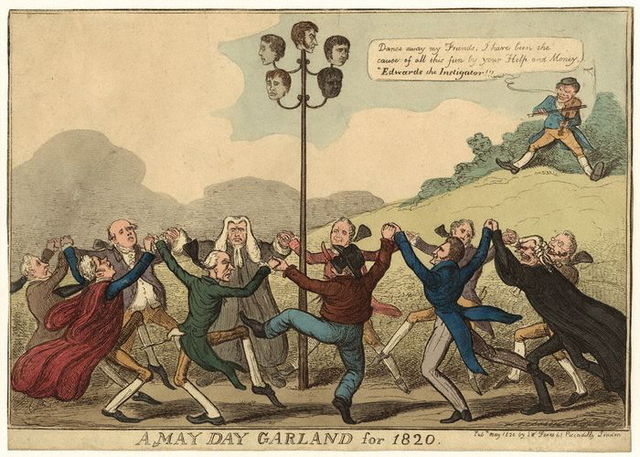Agent Provocateurs & Radical Violence
Learn from History | 02.10.2012 09:12 | History | Policing | Repression
The Cato Street Conspiracy was an attempt to assassinate Tory Prime Minister Lord Liverpool and members of the Cabinet. The would-be assassins came from a revolutionary organization called the Spencean Philanthropists (a revolutionary cell named after radical agitator Thomas Spence). Activists such as Arthur Thistlewood had been involved in the Spa Fields riots, and most of the group had been radicalised by police brutality at Peterloo in Manchester and by the current economic depression. Inspired by the French Revolution, the group planned to execute the Cabinet, hoping to inspire a popular uprising, overthrow the government and oversee a social revolution. The group included Jamaican activist William Davidson - possibly Britain's first black revolutionary, and George Edwards, who, when he gave a gun to fellow cell member William Tunbridge, was told "Mr Edwards you may tell your employers that they will not catch me in their trap".
George Edwards had been recruited as a Home Office agent after Major General Sir Herbert Taylor met Edwards working as a street trader, and, although Edwards was suspected of being a plant by other members, he was protected by the group's leader Arthur Thistlewood. Edwards proposed the assassination plan to the group with the full prior knowledge of the Home Office, advertised a meeting, then reported back to the police that the group would follow through with his suggestion. Police spy George Ruthven then led a raid in which a police officer was killed. The group were arrested at the scene or soon after, and although the court accepted that (as an agent provocateur) George Edwards was not a reliable witness, even without his testimony 5 revolutionaries were executed and 5 more sentenced to deportation, while George Edwards was given a new identity and settled in South Africa. The State used the plot it had initiated not only to justify executing 5 activists but also to justify repressive legislation and to smear the entire protest movement. The cartoon shows George Edwards playing a violin on a hill, mocking his executed comrades.
Since 1820, the State has had plenty of time to refine its tactics.
Learn from History

Comments
Display the following 15 comments